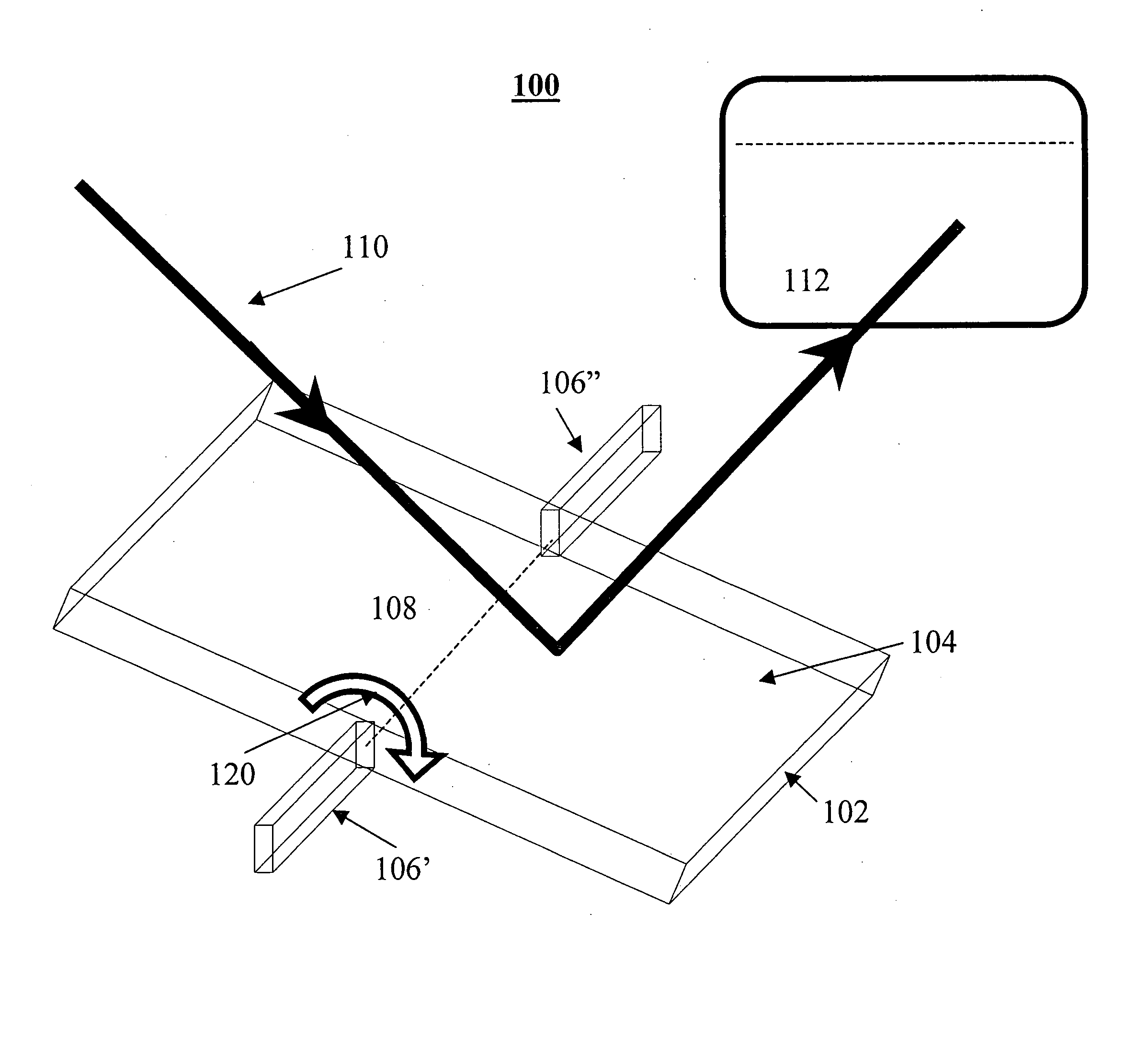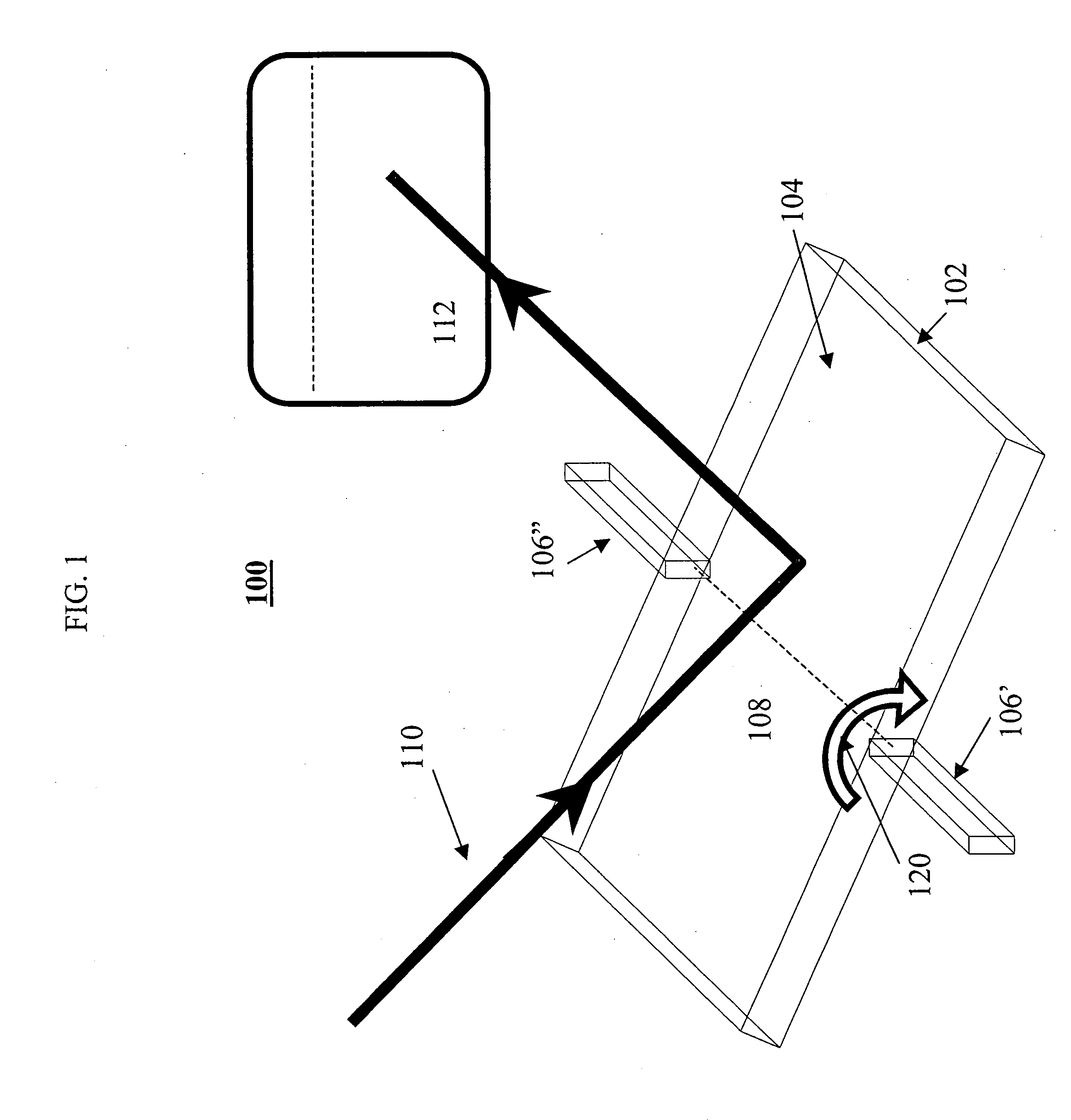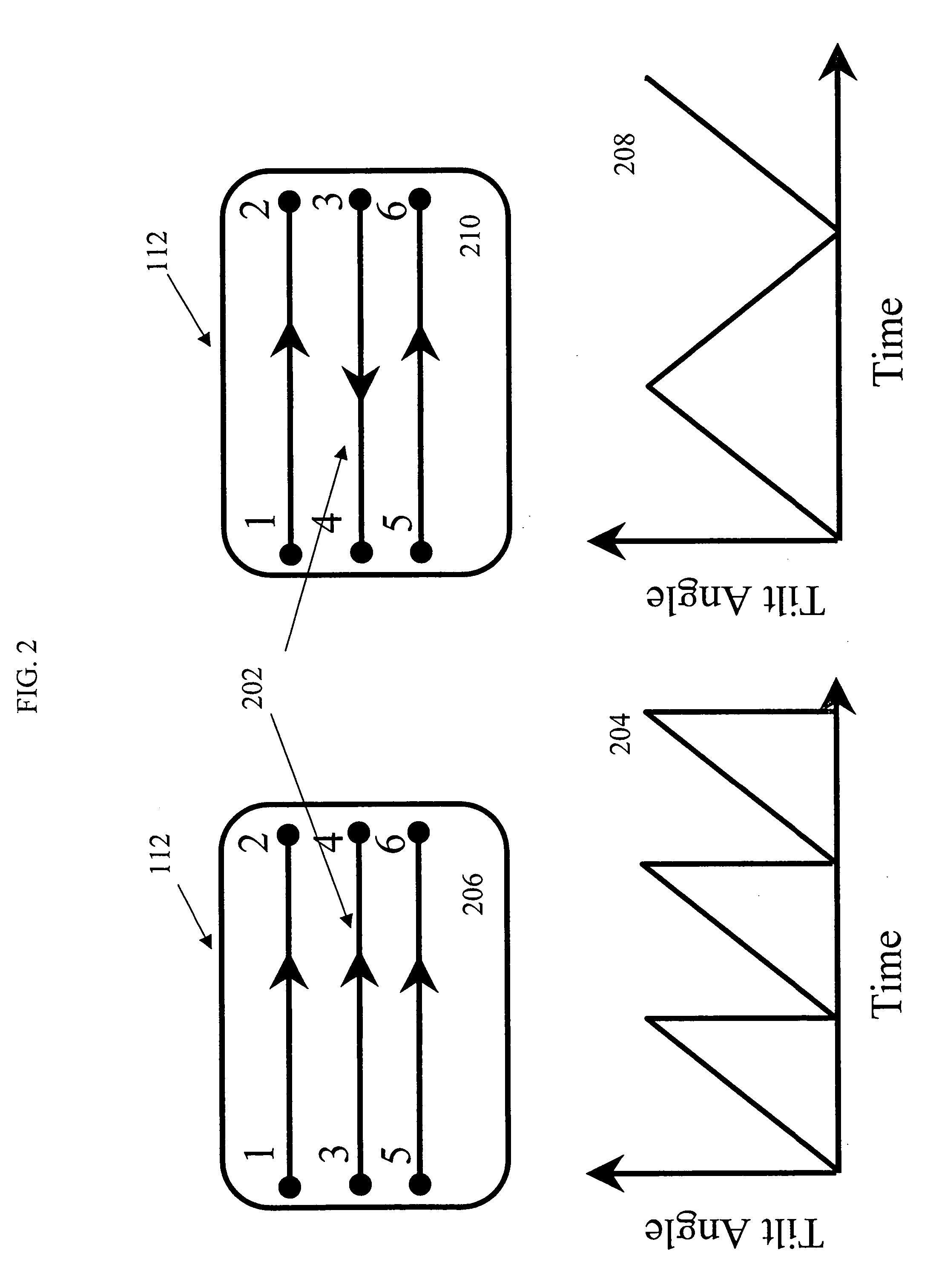Bouncing mode operated scanning micro-mirror
a micro-mirror and bouncing mode technology, applied in the field of tilting micro-mirrors, can solve the problems of high uncertainty, difficult to provide, and difficult to meet, and achieve the effects of improving linearity, improving accuracy, and improving scanning performan
- Summary
- Abstract
- Description
- Claims
- Application Information
AI Technical Summary
Benefits of technology
Problems solved by technology
Method used
Image
Examples
Embodiment Construction
[0058] The present invention discloses a tilting bouncing mode micro-mirror that uses either an additional stiffness element (“bouncer”) or a pre-curved nonlinear stiffness element to achieve a superior scanning performance. While a bouncer such as a cantilever or beam is an element with linear stiffness, we have found inventively and advantageously that its cooperative action with other elements of the system (specifically a torsion spring) that have a different stiffness yields a combined “nonlinear stiffness element” effect. The bouncing mode uses an actuation operation mode based on a special nonlinear actuation and control principle. The “bouncing-mode” actuator that actuates the mirror is operated in the self-exciting mode and its motion is actually a limit cycle. The actuator moves the mirror in a piecewise linear trajectory. The nonlinear actuation and control principle provides a set of desirable features such as small size and weight, low power and low heat dissipation, hi...
PUM
 Login to View More
Login to View More Abstract
Description
Claims
Application Information
 Login to View More
Login to View More - R&D
- Intellectual Property
- Life Sciences
- Materials
- Tech Scout
- Unparalleled Data Quality
- Higher Quality Content
- 60% Fewer Hallucinations
Browse by: Latest US Patents, China's latest patents, Technical Efficacy Thesaurus, Application Domain, Technology Topic, Popular Technical Reports.
© 2025 PatSnap. All rights reserved.Legal|Privacy policy|Modern Slavery Act Transparency Statement|Sitemap|About US| Contact US: help@patsnap.com



